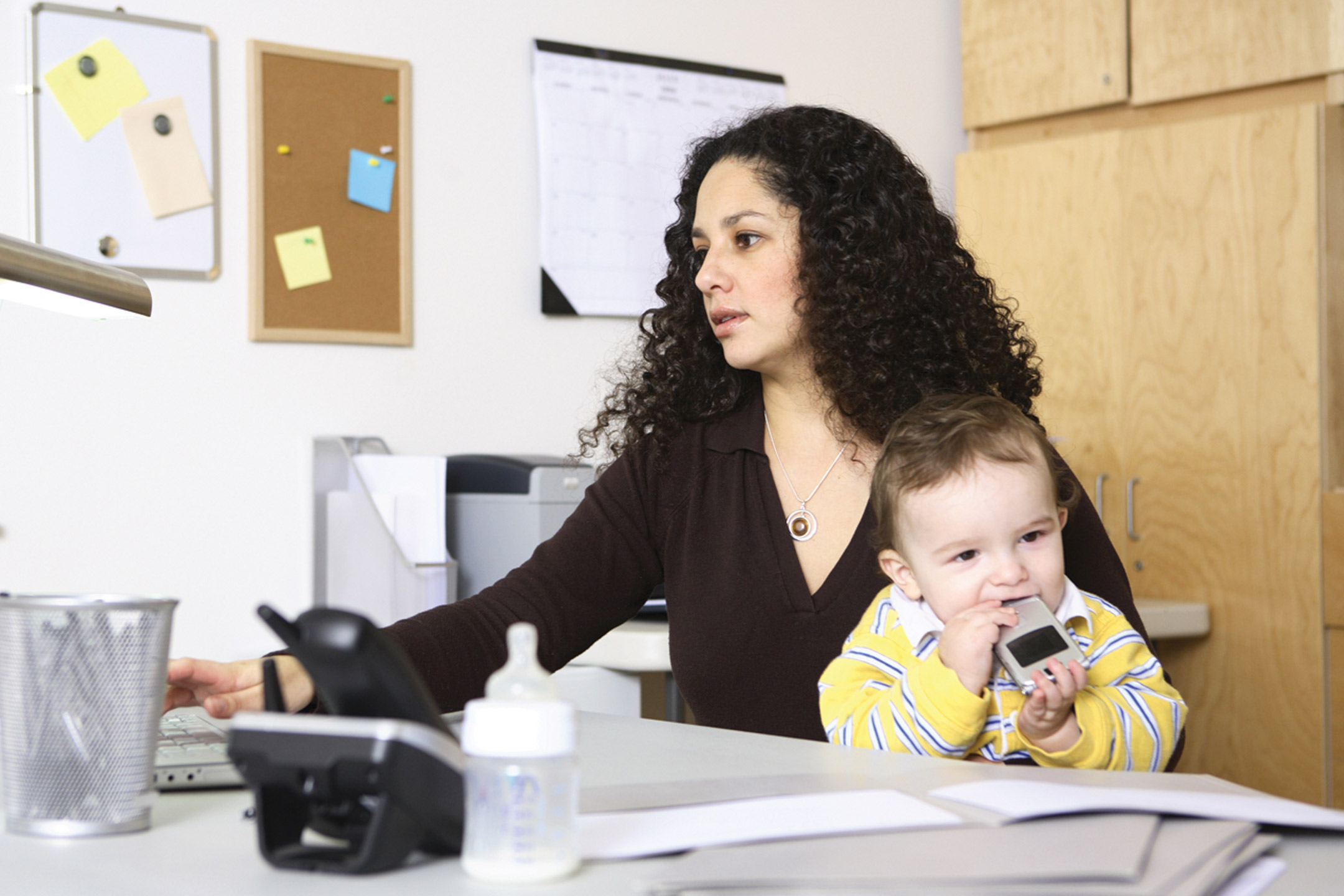
15 Apr AI, automation and the working future of women
Dr Brendan Churchill and Professor Leah Ruppanner look at the future of work for women.
So much of the debate around the future of work has us thinking far into the future– to workplaces unimaginable and to jobs that very few of us feel we are qualified for at present. But the future of work is here and now.
To take but just one example, algorithms: our lives and day-to-day experiences are mitigated and managed by algorithms, sorting out where we eat, what we buy, who we date and where we go. Algorithms are also at the heart of ‘apps’.

We have seen an ‘appification’ of basic needs and services. When we encounter a problem, we turn to our apps. Transport? Uber. Home repairs? Airtasker. Where to go for dinner? Yelp.
The pervasiveness of this technology is so profound that even governments are turning to apps to provide services, like assistance for the unemployed.
The almost seamless integration of technology into our lives means that the future is here and that ‘the future’ will probably mean more integration of automation and artificial intelligence into our everyday lives.
In light of this, it’s important to ask: what does the expansion and uptake of these technologies mean for the future of work? And what does it mean for the futures of women?
AUTOMATION AND ARTIFICIAL INTELLIGENCE
Artificial intelligence and automation are used all the time in popular lexicons but without a clear distinction. So, let’s clear it up here.
Automation is taking existing tasks that had historically been done by humans and having them done by a machine.
And robots will increasingly take over many physical tasks in the future – from meatpacking to fruit picking to stocking shelves. We have been living in an automated world for a while – starting with the cotton loom, then to the assembly line and now to a world of robots cultivating our food.
Artificial intelligence (AI) is the use of data and algorithms to create more efficient decision-making.
Much like the human brain, AI is scanning all those little sprinkles of data spread around us to make smarter decisions. The goal is to get machines to think flexibly, understand how to sort through data and identify the important from the superfluous.
This can include machine learning, where algorithms are automatically refined based on new information and past mistakes – it is becoming intelligent so that computers can provide nuanced understandings similar to the workings of the human brain.
So, the future is here, and automation and AI will only canvass more of our lives. And that is a good thing, right?
SOME JOBS BUT NOT OTHERS
Automation and artificial intelligence are bringing revolutionary change to the workforce, marking the fourth industrial revolution.

The greatest employment reductions for humans will be in manufacturing, professional, scientific and technical services as well as in the construction sector. All of this makes automation and artificial intelligence sound like the harbingers of doom and gloom to modern economies and work.
But there will be some industries and occupations that will be advantageous amongst all this change.
Care and caring industries, as well as human service delivery industries (for example, social workers, psychologists, and grief counsellors), are expected to grow exponentially as ageing populations across Western, developed countries soar.
The global care workforce accounts for 11.5 per cent of total global employment and is dominated by women who make up two-thirds of all care workers: women account for 248.9 million care workers while men only 132.1 million.
Conservative estimates from the International Labor Organization expect the global care workforce to grow to 475 million by 2030
This growth will see shortages – for example, the World Health Organization (WHO) forecasts a shortage of 18 million healthcare workers by 2030. This means the care area will continue to grow and need workers to fill these new roles.
Alongside the growing care and caring industries, new industries will emerge.

Workers will need to be trained to work alongside artificial intelligence. These technologies, while advanced, are dependent on human supervision. To make these technologies work and to ensure their successful utilisation, trained users will be needed.
Further, integral to the success of the future workforce will be the performance of tasks that require strong social, empathic and interpersonal skills.
These are traits that are inherent to being human and are most often cultivated by women.
So, women hold deeper future skills and already work in industries slated to grow. So, does this mean that women are the winners in the world of automation?
THE FUTURE OF WORK FOR WOMEN
Economists have tended to argue that the workforce is segregated by gender because women and men tend to ‘sort’ themselves into different types of jobs or choose different careers.

Women are more likely to go into care professions, termed “pink collar” jobs that include nursing, teaching, childcare workers and aged care.
These jobs tend to have an inherent component of caring for others—children, older adults and the sick. Since women are socialised to value their roles as caregivers, it’s no surprise that these occupations are dominated by women.
Interestingly, these jobs are the least likely to be automated by baby-changing robots or artificial intelligence.
The demographic changes in the pipeline—the ageing of Baby Boomers—mean a larger segment of the population will need these services. As a result, it appears that these woman-dominated industries will survive, grow, and thrive.
But the question remains: is this good news for women?
To answer these questions, we need to think about what the caregiver lives of working women look like now. Women in these caregiving jobs tend to hold less education, lower incomes, less job security and care demands of their own.
These women tend to experience overwork, burn-out and poor mental health. The reason? Caregiving is emotionally and physically strenuous, and many are also managing caregiving demands at home, leaving them no break from care work.

The aging of the Baby Boomers indicates that a larger number of adults will require some kind of caregiving. Add to that the fact that globalisation has spread families around the world and we can see why a dire caregiving crisis is coming.
The demand for caregiving will exceed capacity – who will pick up these roles is up for discussion. But, based on previous patterns, we would expect caregivers to be mostly women.
So, will the future of work for these women be rosy? Only if we value their labour and support their care. And, while we are at it, can we help with the care for all families as well?
These are important questions that we cannot solve with an algorithm.
AUTOMATION AND RE-SKILLING
The other open question is whether men will start to move into these historically women-dominated professions as jobs in male-dominated industries contract. Automation is positioned to erode our historically male-dominated professions – manufacturing, construction and transportation.
As these jobs disappear, will men re-skill into what were historically women-dominated professions? Will men become the caregivers of the future? If the future is women, will men step into these roles?

Historically, men have sorted into higher prestige and higher pay jobs than women even if they work in the same industry. Sociological research shows men who enter professions stereotypical to women – like nursing or teaching – earn more money and are promoted more quickly.
This previous research suggests that men won’t take poorly paid, low-status, woman-dominated jobs. But, if they do step into them, they are likely to shift the cultures or reap greater status, power and money.
There’s reason to believe the COVID-19 pandemic will speed up the movement towards automation and artificial intelligence technologies.
Major meatpacking plants in the US accelerated their movement towards robotics in their plants. The reason? Robots work continuously and don’t get sick.
Governments could redress some of these issues by instituting quotas to ensure that groups who have difficulty getting a foothold into labour markets have more doors opened and not closed. They could also trial these programs internally, through the public sector itself.
But, if we can raise awareness of the pitfalls and use smart policy to mitigate the damage, there is no reason why Australia can’t lead the world in the future of work. And that would be something to celebrate… maybe on Zoom.
This is an edited extract of an article originally published as part of the NGV Triennial series.
The Work Futures Hallmark Research Initiative explores multiple dimensions of the future of work. Professor Ruppanner’s course Artificial Intelligence and Women is available through Melbourne Microcerts.
This article was first published on Pursuit. Read the original article


